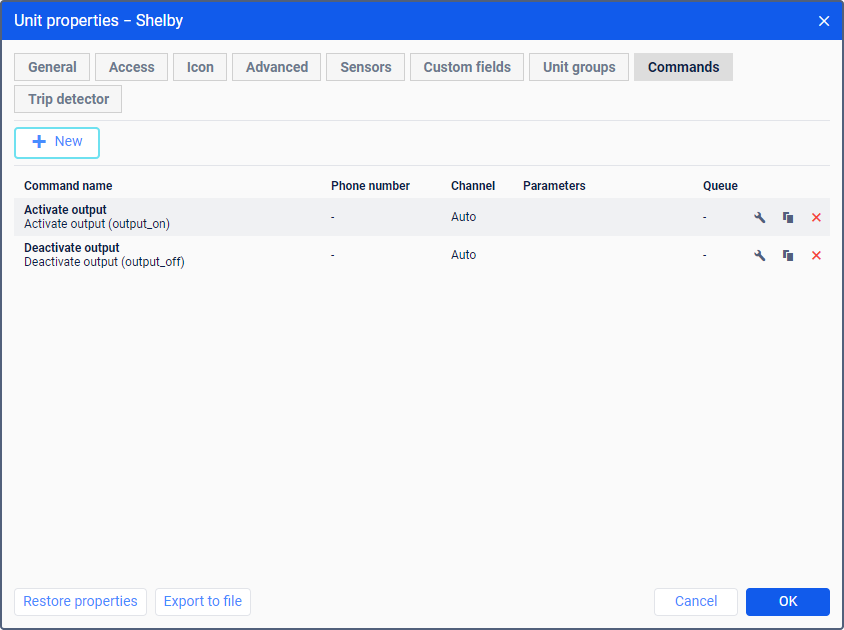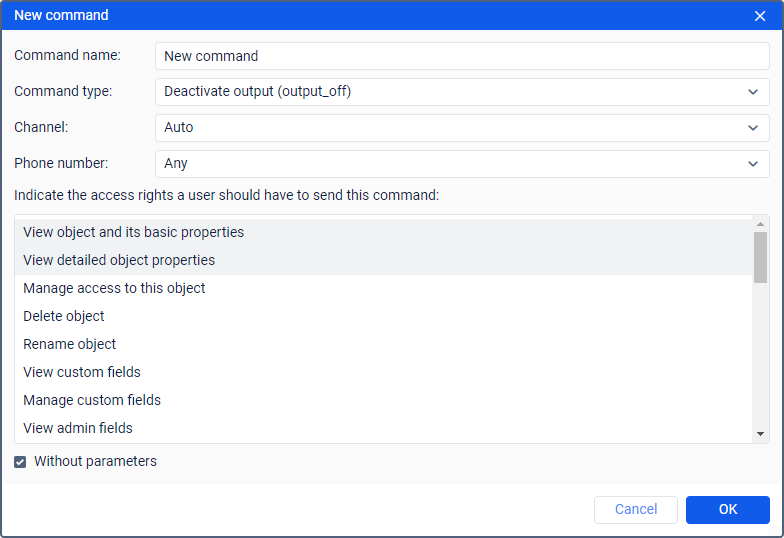Creating commands
To create a command, click New ( ), specify its properties, and click OK.
), specify its properties, and click OK.

Command properties
Commands have the properties described below.

| Property | Description |
|---|---|
| Command name | The name of the command. Command names should not be repeated in the properties of one and the same unit. |
| Command type | The initial name of the command in the system. The list shows only those commands which are supported by the unit device. See the list of commands supported in the system.For one unit, you can create several commands of one and the same type. |
| Channel | The channel (connection type) via which the command should be sent: Auto, TCP, UDP, Virtual, SMS. The list of channels depends on the device type selected on the General tab. Read more about the channels below. |
| Phone number | The phone number is required for commands sent via SMS. Some types of equipment can support two SIM cards. In this case, you can select which of the two phone numbers should be used to send the command: First, Second or Any. If you select Any, the message is sent to the first phone number, if specified. If the first number is not specified, the message is automatically sent to the second. You cannot change the number at the time of sending the command. |
| Access rights | Not applicable in the system. |
| Parameters | Some commands require additional parameters. These could be, for example, the input or output number, and so on. To specify the parameters, clear the selection of the Without parameters option and fill in the required fields. If the parameters are not specified when creating the command, you should specify them when sending it. The parameters specified when creating the command cannot be changed at the time of sending it. |
Channels
The channels via which you can send commands are described below.
| Channel | Description |
|---|---|
| Auto | If this connection type is selected, an available channel is automatically selected when sending the command. If more than one connection type is available, the priorities are the following: UDP, TCP, SMS, Virtual. |
| TCP, UDP | When a TCP or UDP channel is selected, the command is sent to the unit only if the device is online. |
| Virtual | This channel can be used to send the command to the unit when the device is not online. Such a command is queued and sent via the GPRS channel after the connection is established.The Virtual commands are not available for some device types, but can be added upon request. |
| SMS | GSM commands are sent via this channel. To use it, the phone number of the device should be specified in the international format in the unit properties, and the SMS messages service should be enabled in the account properties. |